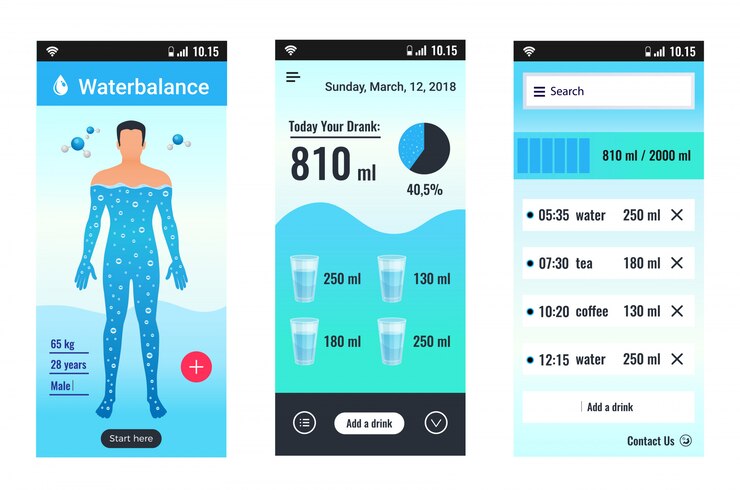Beat the Heat: Essential Tips for Preventing Overheating
Understanding Overheating: Causes and Symptoms

Identifying the Signs of Overheating in Pregnancy
During pregnancy, the body works harder, which can lead to overheating. It's key to know the signs. Look out for these symptoms:
Experiencing discomfort due to heat can manifest in several ways, including excessive sweating, which often indicates the body’s attempt to cool down. This can be accompanied by a faster-than-normal heart rate, as the cardiovascular system works harder to regulate temperature. Individuals may also feel dizzy or faint, a sign that the body is struggling to maintain proper blood flow in extreme heat. Then, skin may appear warm or red, reflecting increased blood circulation to the surface. Additionally, headaches and a general sense of weakness can occur, often exacerbated by dehydration. In severe cases, nausea or vomiting may arise as the body reacts to overheating, emphasizing the importance of staying cool and hydrated in high temperatures.

Common Causes of Overheating
Overheating can have many causes. Some are simple to fix, others need more care. Here's a list of usual suspects:
High temperatures, particularly during summer, along with intense exercise, can quickly raise body heat, especially when wearing tight clothing that traps warmth. Dehydration further complicates cooling, as the body needs adequate fluids to regulate temperature effectively. Certain health conditions and medications can also make it challenging to manage heat, while pregnancy places additional strain on the body, causing it to overheat more quickly.

Proactive Measures to Prevent Overheating
Tips for Managing Your Daily Temperature
Begin your day with a cool shower to help regulate body temperature, and choose lightweight, breathable clothes to stay comfortable. When outdoors, using a personal fan or cooling towel can help you stay cool, and try to avoid the peak heat hours from 10 am to 4 pm if possible. Keep your home cool with shades, fans, or air conditioning, and monitor temperature and humidity levels to know when to adjust activities. Limit intense physical activities during hot weather, and if you need to be outside, plan tasks for cooler times, like early morning or evening.
Embracing a Cool-Headed Lifestyle
Wearing light, breathable fabrics can help improve air circulation and keep you cool, while avoiding peak sun hours from 10 am to 4 pm minimizes exposure to harsh sunlight. Inside, using fans or air conditioning can create a more comfortable environment. Additionally, incorporating relaxation techniques such as mindfulness or gentle yoga can help reduce stress, which can contribute to feelings of heat. For outdoor activities, it's best to schedule them during the cooler parts of the day, like the morning or evening, to avoid the heat and enjoy a more pleasant experience.

The Role of Diet and Hydration in Temperature Regulation
Keeping cool during pregnancy is key. A balanced diet helps manage your body's heat. Include lots of fruits and veggies. They are full of water which aids hydration. Staying hydrated is a must, so drink plenty of fluids. Aim for at least eight glasses of water daily. Avoid caffeine as it can lead to dehydration. Also, cut down on sugary or spicy foods. They can increase body temperature. Sticking to smaller, more frequent meals can also help. This prevents your body from overheating after a large meal. Remember, a cool body ensures a safe and comfy journey for you and your baby.
Support and Resources
Community Support for Maternal Health
During pregnancy, staying cool and avoiding overheating is vital. It's not just about self-care, but also about the health of your unborn baby. This is where community support plays a crucial role. Reaching out to local maternity groups can provide a strong sense of belonging and access to shared knowledge. They often offer tips on how to stay cool, especially during hot months. You can learn from the experiences of other moms. Health clinics may run educational sessions on managing temperature in pregnancy. Also, community centers often have programs for pregnant women, focusing on wellness in a supportive environment. It's important to find and use these resources. With community support, you can navigate your pregnancy journey more safely and comfortably.
Tools and Resources for Maintaining Temperature Balance
Navigating the journey of pregnancy requires support. Here are tools to stay cool:
- Self Care Planner
A Self Care Planner is a useful tool for monitoring your daily activities while also being mindful of how temperature changes impact your well-being. By keeping a record of your daily routine, including exercise, work, and relaxation times, you can identify patterns in your energy levels and mood. Noting temperature changes throughout the day such as peak heat hours or cooler moments can help you plan activities more effectively. For instance, if you notice you feel more sluggish during hot afternoons, you can adjust your schedule to include lighter tasks or relaxation during those times. This awareness not only encourages better self-care practices but also empowers you to make informed decisions about when to be active and when to rest, ultimately leading to a healthier lifestyle.
- Hydration Apps
Hydration apps are helpful tools that send regular reminders to drink water, ensuring you stay hydrated throughout the day. These apps often allow you to set personalized goals based on your activity level, weight, and climate, making it easier to track your intake. With visual progress trackers and notifications, hydration apps keep you on track and help prevent dehydration, especially on busy days or in hot weather. Staying properly hydrated is essential for energy, focus, and overall health, and these apps make it simple to keep up with your water needs.

- Thermal Wearables
Thermal wearables are devices you can wear that track your body temperature in real time. These gadgets, often worn on the wrist or as patches, continuously monitor how warm or cool your body is, alerting you to any sudden changes. This helps you stay aware of your body's response to activities, weather, or other factors so you can adjust and avoid overheating or getting too cold. Thermal wearables make it easy to keep tabs on your comfort and well-being throughout the day.

- Cooling Products
Cooling products are specially designed clothes or devices that help lower your body temperature. These can include items like cooling towels, breathable fabrics, or even wearable fans that keep you cool by allowing heat to escape or by providing a refreshing breeze. Using these products, especially on hot days or during intense activities, can make it easier to stay comfortable and prevent overheating.
Expert Advice and Medical Interventions for Overheating
When a mother-to-be faces overheating, expert advice is key to get the medical pros may prescribe rest, hydration, or even a specific diet. They might also suggest cooling gels or maternity wear that supports temperature control. A doctor can guide on when to seek help and if have a fever spikes or dizziness occurs, it's time to contact a professional. For severe issues, medical intervention like IV fluids may be needed. They will give tips tailored to your body's needs and be sure to ask about self-care methods and what warning signs to watch for.
Conclusion
Managing body heat during pregnancy is crucial for both your health and the well-being of your baby. By understanding the causes and symptoms of overheating, you can take proactive steps to stay cool and comfortable. Utilizing tools like self-care planners, hydration apps, thermal wearables, and cooling products can help you monitor your temperature and maintain hydration. Additionally, accessing educational resources and community support can provide valuable tips and encouragement. Remember to prioritize your comfort and health by adopting a cool-headed lifestyle, staying hydrated, and seeking expert advice when needed. With these strategies in place, you can enjoy a safer and more comfortable pregnancy journey.
